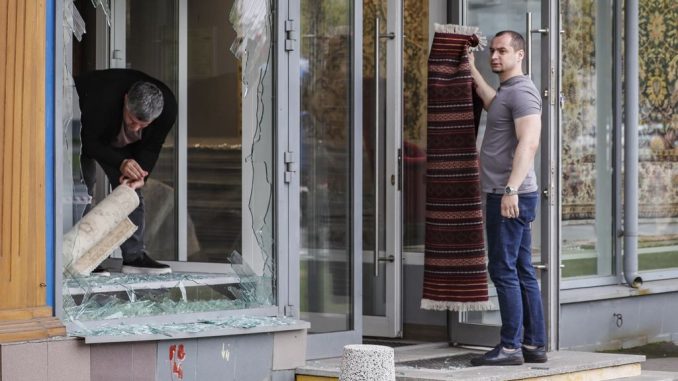
Moscow Experiences a Surge in Drone Attacks
Once again, there was a drone attack on an apartment building in the center of Moscow last night. This marks the fifth attack on the Russian capital in just one month. Ukrainian involvement is suspected, and there are reports that Ukraine is increasing its production of drones.
Inevitable Escalation of War
Ukrainian President Zelensky believes that the war is naturally progressing to “symbolic centers and military bases” on Russian soil. There have been around 130 drone strikes in Russia and Crimea this year alone, with a variety of unmanned aircraft being deployed.
Although Ukraine does not claim responsibility for the attacks, Samuel Bendett, an unmanned weapons researcher at the American institute CNA, states that it is a clear Ukrainian response. He suggests that these attacks demonstrate Kyiv’s stance against the bombing of Ukrainian cities and the need to retaliate.
Kamikaze Drones Used in Russian Attacks
The Russian military has been responding to the attacks by bombarding Kyiv and other cities with kamikaze drones. The drones used in the recent attacks in Moscow also appear to be flying bombs, controlled remotely from the ground and exploded upon reaching their targets.
Ukrainian Origins of the Attacks
It is speculated that the larger drones launched in the attacks on Moscow originated from Ukraine, as they would have to cover around 500 kilometers to reach the capital. However, there is no concrete evidence linking the attacks to Ukraine just yet, although multiple types of drones developed by Ukraine, including the UJ-22 and the ‘Bever,’ have been identified.
Strategic Tactics
The drone attacks primarily occur at night, making it more difficult to detect the UAVs. Additionally, the kamikaze drones fly at low altitudes to avoid radar systems. Multiple drones are typically deployed simultaneously, increasing the likelihood that at least one will bypass anti-aircraft systems.
Russia claims to have shot down most of the drones, utilizing anti-aircraft defenses and jammers to redirect the aircraft. However, eyewitnesses in Moscow have reported smaller drones being used, potentially launched from Russian territory, but this remains unconfirmed.
Insights from Russia Correspondent Geert Groot Koerkamp
Russia correspondent Geert Groot Koerkamp explains that the drone attacks on Moscow have not attracted significant attention. Due to the size of the city, the attacks are seen as small incidents, often going unnoticed by many residents. The lack of air raid alarms and the absence of casualties contribute to the Kremlin’s ability to downplay the attacks. However, as the frequency of the attacks increases, it becomes harder to conceal the situation.
While no fatalities have been reported thus far, it is important to note that the attacks have landed near government buildings and populated areas, raising concerns of potential casualties and increased unrest.
Increasing Ukrainian Drone Production
The Ukrainian government has raised approximately $100 million through crowdfunding for the production and purchase of war drones. Prime Minister Denys Shmyhal recently stated that domestic drone production has increased tenfold in the past year. The Ukrainian government plans to invest an additional $1 billion in the Ukrainian drone sector this year.
Collecting Funds with Help from Mark Hamill
The Army of Drones project in Ukraine has launched a crowdfunding campaign, with Star Wars actor Mark Hamill serving as an ambassador for the initiative. The campaign has financed the development of the Beaver kamikaze drone, which is believed to have attacked Moscow. Ukrainian influencer Ihor Lashenkov also claims to have raised half a million dollars with the support of his followers.
Aside from aerial drones, the Ukrainian army has also developed floating drones. These large sea drones, referred to as sailing kamikaze drones, have been produced with the assistance of crowdfunding and are utilized in attacks on Russian naval bases in Crimea.

Be the first to comment